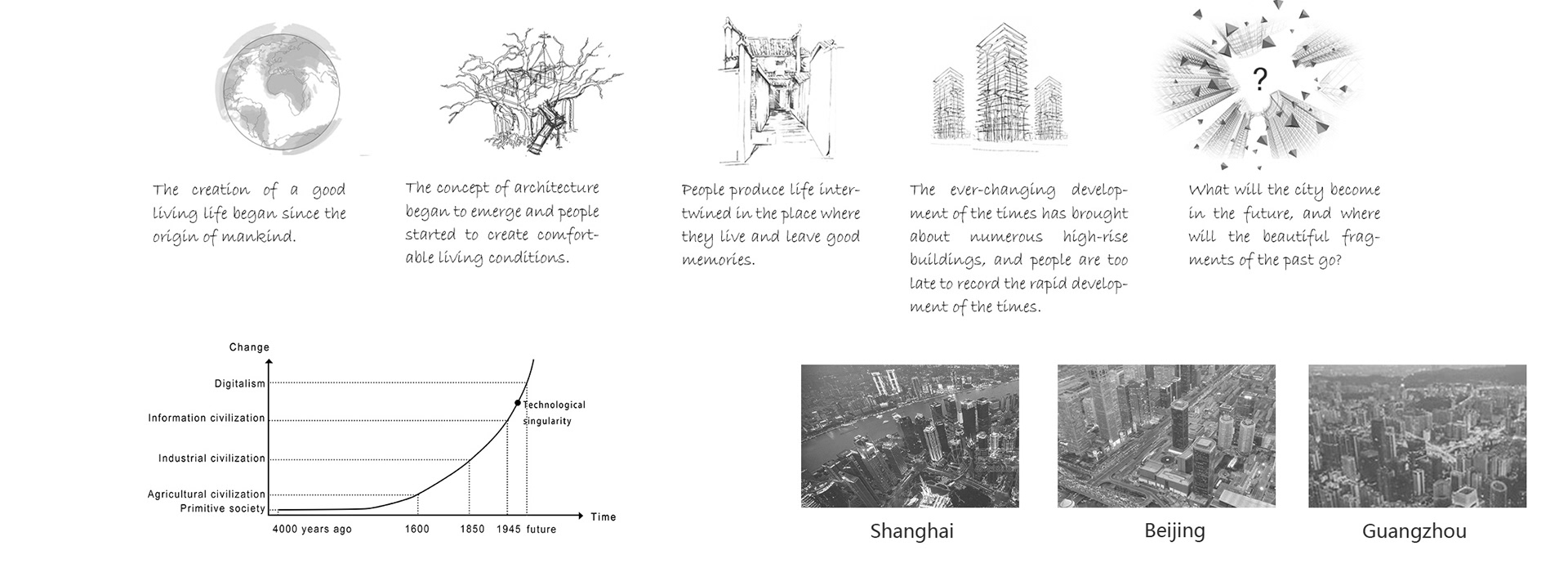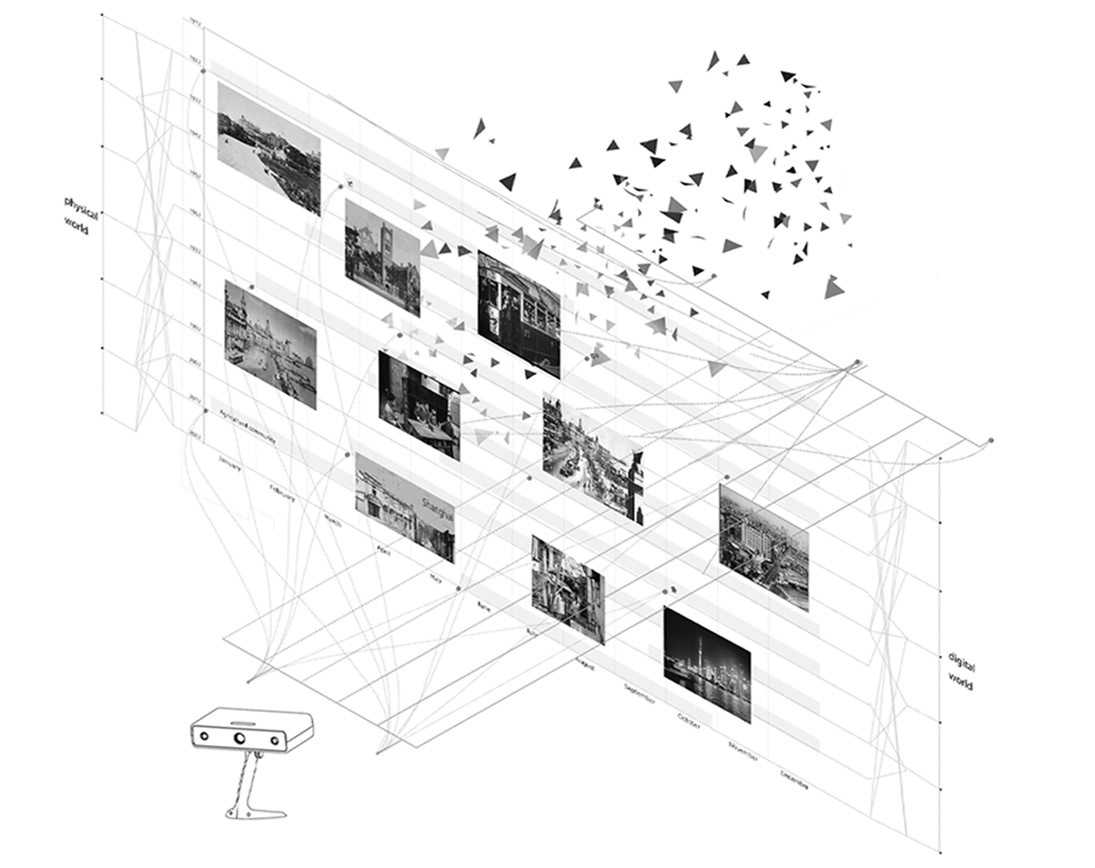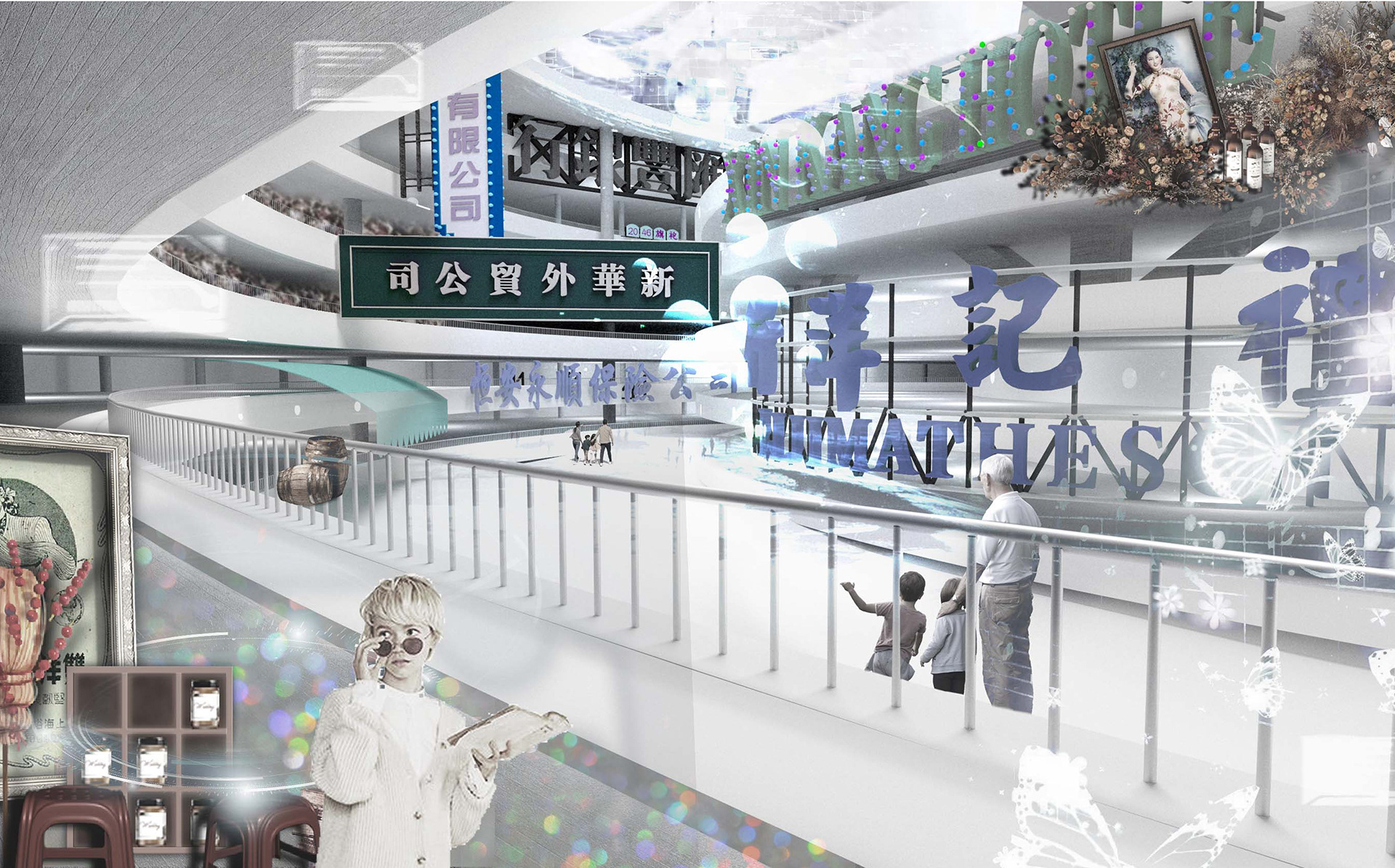Shanghai, located in the Yangtze River Delta, is known for its prosperity and ambition, where every skyscraper is the figure of a dreamer's efforts. Over a century ago, an American journalist wrote in his book "Gateway to China" that the entire city of Shanghai was in a constant state of change, and that day by day, old buildings were disappearing and being replaced by modern ones. All these are definitely the side-story of Shanghai's rapid development. The direct demolition of such buildings with strong historical, cultural and humanistic memories also pains many people. However, the silhouette of the city will remain in people's memory forever and will not be forgotten with the change of generation, which is what everyone who has lived here hopes for.


Leveraging the height of the skyscraper and the movable memory scanners on the building, we scan the entire urban space, convert the scanned images into 3D data, store the data, and implement the data input for the building. Projection printing is used to react the stored 3D data to the internal physical space of the building to achieve a 3D storage and a three-dimensional experience. As a conversion medium, some components of the building can go into the virtual world of the meta-universe through this medium, and show the three-dimensional city streetscape space by means of virtual digitization, so that people can feel the urban landscape of different periods.
The building shape spirals up like a DNA double helix structure, and the city memory is included in the double helix structure like genetic information. Through optical 3D technology, projection, VR, AR, MR and other technologies, the real building entity and the space of the virtual world are correlated and synchronized, interacting in real time to create a meta-universe world that records urban memories in all aspects.
In the interior of the building, the space is an adaptive space combining virtual and real, and the result of scanning is its component and source. The spatial form is determined by the behavior of people inside the building and is constantly changed in the process of referencing. Inside the building one can see both the past urban memory and the current urban development.
Also the building is constantly evolving, with varying types of architecture from era to era, the images reflecting on the space requires different types of space. Some of the materials used to construct the building come from old buildings that had to be demolished, saving energy and adding a familiar touch to the city's memory.
Also the building is constantly evolving, with varying types of architecture from era to era, the images reflecting on the space requires different types of space. Some of the materials used to construct the building come from old buildings that had to be demolished, saving energy and adding a familiar touch to the city's memory.
The city is always developing, so hopefully this building can evoke people's childhood memories, find the roots of human cities and culture, solve the problem of urban homogenization, find a balance between cultural preservation and economic development, and better develop urban construction. Also, the building serves as a warning to remind the "urban looters" who focus on development: the lack of culture is the real lack.
The building shape spirals up like a DNA double helix structure, and the city memory is included in the double helix structure like genetic information. The city memory of various periods like the diversity of genetic information makes the city present different forms like a biological individual, and through the external scanning of the building, the scanned city shape and other information data is projected and transmitted to the inside of the building, which reacts to the internal space form of the building, and at the same time, through naked eye 3D, projection, VR, AR, MR and other technologies, the real building entity and the space of the virtual world are correlated and synchronized and interacted in real time, creating a meta-universe world of all-round recording of the city memory. As a material carrier, the more memories accumulated, the higher the building height, eventually forming the city's DNA, recording the city's development while solving problems such as urban homogenization

